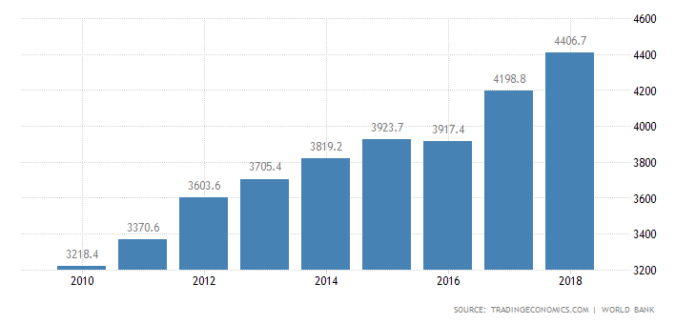YEREVAN (RFE/RL) — Armenia’s GDP per capita is on course to exceed neighboring Azerbaijan’s and Georgia’s this year, according to the International Monetary Fund.
In its most recent World Economic Outlook, the IMF forecast a GDP per capita of $4,760 for Armenia in 2020, compared with $4,720 for oil-rich Azerbaijan and $4,630 for Georgia.
Prime Minister Nikol Pashinyan made the same prediction when he spoke in the Armenian parliament in December.
Pashinyan seized upon the IMF projections in a Facebook comment posted on Monday, January 6. “Based on the results of 2019, we have surpassed Georgia [in terms of GDP per capita,]” he wrote. “In 2020, we will also surpass Azerbaijan and become the leading country of the South Caucasus.”
The Armenian economy has expanded robustly since 2017 after years of sluggish growth that followed the 2008-2009 global financial crisis. According to government data, economic growth reached 7.5 percent in 2017 but slowed to 5.2 percent in 2018, which saw a dramatic regime change in the country. It was projected to accelerate to at least 7 percent in 2019, translating into a GDP per capita of $4,530.
Vahagn Khachatryan, a Yerevan-based economist, said this growth is one of the reasons why Armenia’s GDP now roughly matches that of Azerbaijan and Georgia on a per capita basis.








